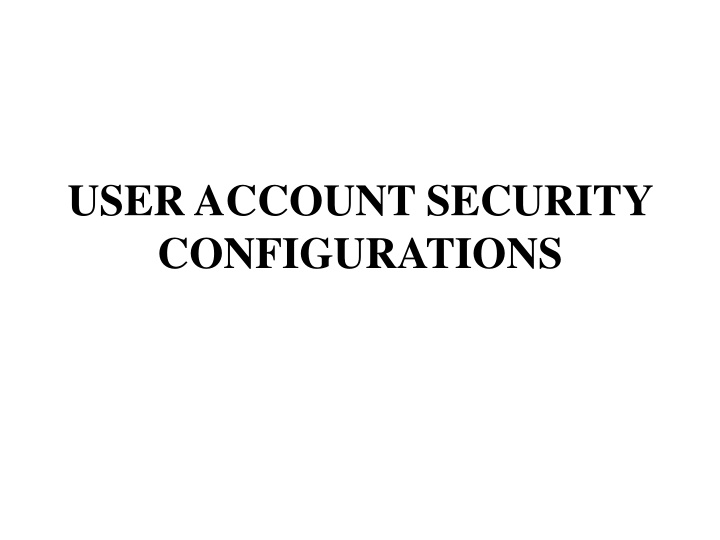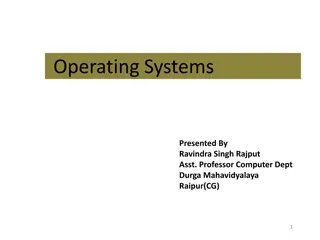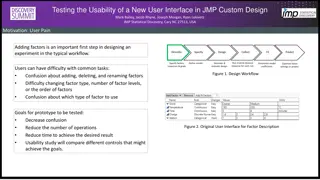
Database User Account Security Controls Overview
Enhance database security by implementing various controls such as user creation, granting permissions, altering accounts, and dropping users. Explore the importance of password expiration in safeguarding user accounts against unauthorized access and potential compromise attempts. Understand how setting unique expiration values for each user can further bolster security measures.
Download Presentation

Please find below an Image/Link to download the presentation.
The content on the website is provided AS IS for your information and personal use only. It may not be sold, licensed, or shared on other websites without obtaining consent from the author. If you encounter any issues during the download, it is possible that the publisher has removed the file from their server.
You are allowed to download the files provided on this website for personal or commercial use, subject to the condition that they are used lawfully. All files are the property of their respective owners.
The content on the website is provided AS IS for your information and personal use only. It may not be sold, licensed, or shared on other websites without obtaining consent from the author.
E N D
Presentation Transcript
USER ACCOUNT SECURITY CONFIGURATIONS
Overview To better secure database user accounts, a DBMS administrator can employ a variety of security controls that manage user accounts: - CREATE USER - GRANT -ALTER - DROP
Password expiration One common control is password expiration, or the length of time that a user s password will remain in effect before the user is required to change that password.
Password expiration This control helps protect a user s account against unauthorized access. In scenarios such as unauthorized use of an old password that has been compromised without the user s knowledge. By requiring the user to eventually change that password, an attacker will no longer be able to use that password to gain unauthorized access.
Password expiration Password expiration can also prevent potential future unauthorized use of a password that is in the process of being compromised. Such as when an attacker issues a brute force password attack. For example, if an attacker needs on average one year to brute force compromise a user s password, and the user s password expires in 120 days, after that password expires and the user puts a second password into effect, should the attacker compromise the first password, it is no longer used and therefore of no value to the attacker. Essentially, password expiration reduces or closes the window of opportunity by which an attack can compromise and use the password for unauthorized access.
Password expiration Password expiration values exist for each user as well as a system default. Each user can have a unique expiration value, and that value is initially the system default in effect when the user account is created. After a user account is created, we can change the expiration value for that specific user without affecting the expiration values of other users. To see the number of days for which a specific user account can use a password without changing the password, we can issue the SELECT statement.
Show Password life time in days SELECT password_lifetime FROM mysql.user WHERE user='root'AND host='localhost ; Here we would replace username with the user name of the account, and hostname for an optional host specification for that account. SELECT password_lifetime FROM mysql.user WHERE user= Ahmd'; We can show the life time for different users. SELECT password_lifetime FROM mysql.user WHERE user= Ahmd OR user = Ali ;
Change the Password Expiration Interval To change the password expiration interval for a specific user, we can issue the following statement: UPDATE mysql.user SET password_lifetime=ndays WHERE user='username'AND host='hostname ; We would replace ndays with the number of days in the expiration interval.
SQL Commands 1- select * from mysql.user; 2- insert into mysql.user (Host, User, ssl_cipher, x509_issuer, x509_subject) value ('localhost', 'kinan', 'BLOB', 'BLOB','BLOB ); 3- UPDATE mysql.user SET authentication_string='Kinan@6565', password_lifetime= 10, password_expired = 'Y', Password_reuse_time = 5,Password_require_current= 'Y WHERE user='fadi' AND host='localhost';






















